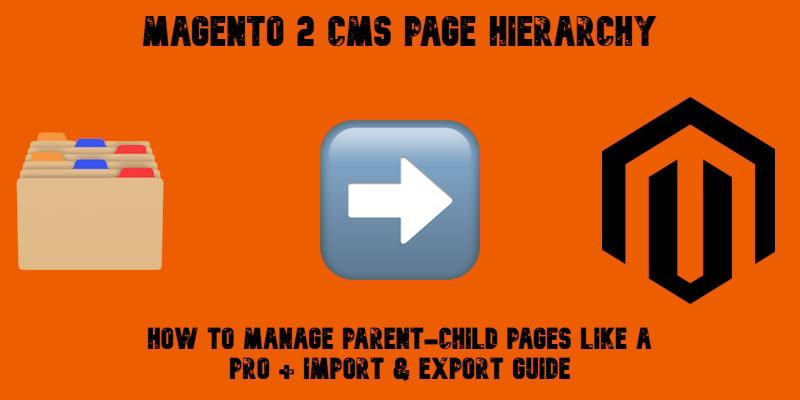Magento 2 CMS Page Hierarchy: How to Manage Parent-Child Pages Like a Pro + Import & Export Guide

Need to structure static content in Magento 2? That’s where the Magento 2 CMS page hierarchy comes into play. Exclusive to Adobe Commerce, this feature allows you to organize CMS pages into a parent-child structure, improving both frontend navigation and backend content management. While Open Source users are limited to flat page lists, Commerce merchants can create nested page layouts, define pagination, and control how menus appear on the storefront — all through a visual hierarchy of nodes.
In the following guide, we explore the Magento 2 page hierarchy in detail. We start by introducing the concept and explaining how it fits into the overall CMS system. You’ll learn how the node-based structure works, how to create and assign pages to it, and how to control menu layouts and pagination behavior. From there, we shift to data management, showing you how to import and export the Magento 2 CMS page hierarchy using the Improved Import & Export extension. Since the default platform offers no native way to transfer this content type in bulk, we also outline the extension’s role in automating these tasks.
Whether you’re building a content-heavy site section or migrating page structures between stores, the Magento page hierarchy — combined with flexible import/export tools — gives you full control over how your content is organized and deployed.
Continue Reading
